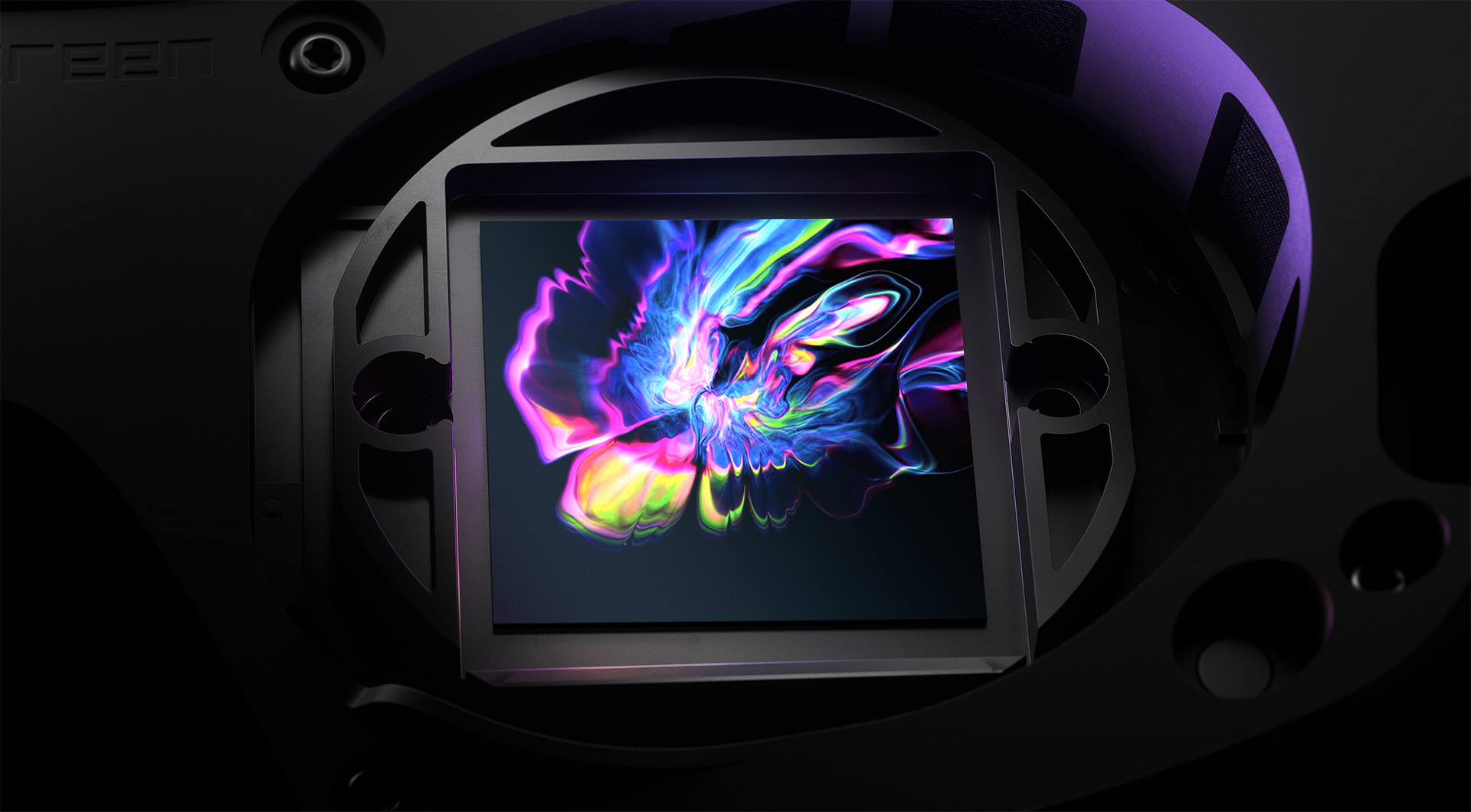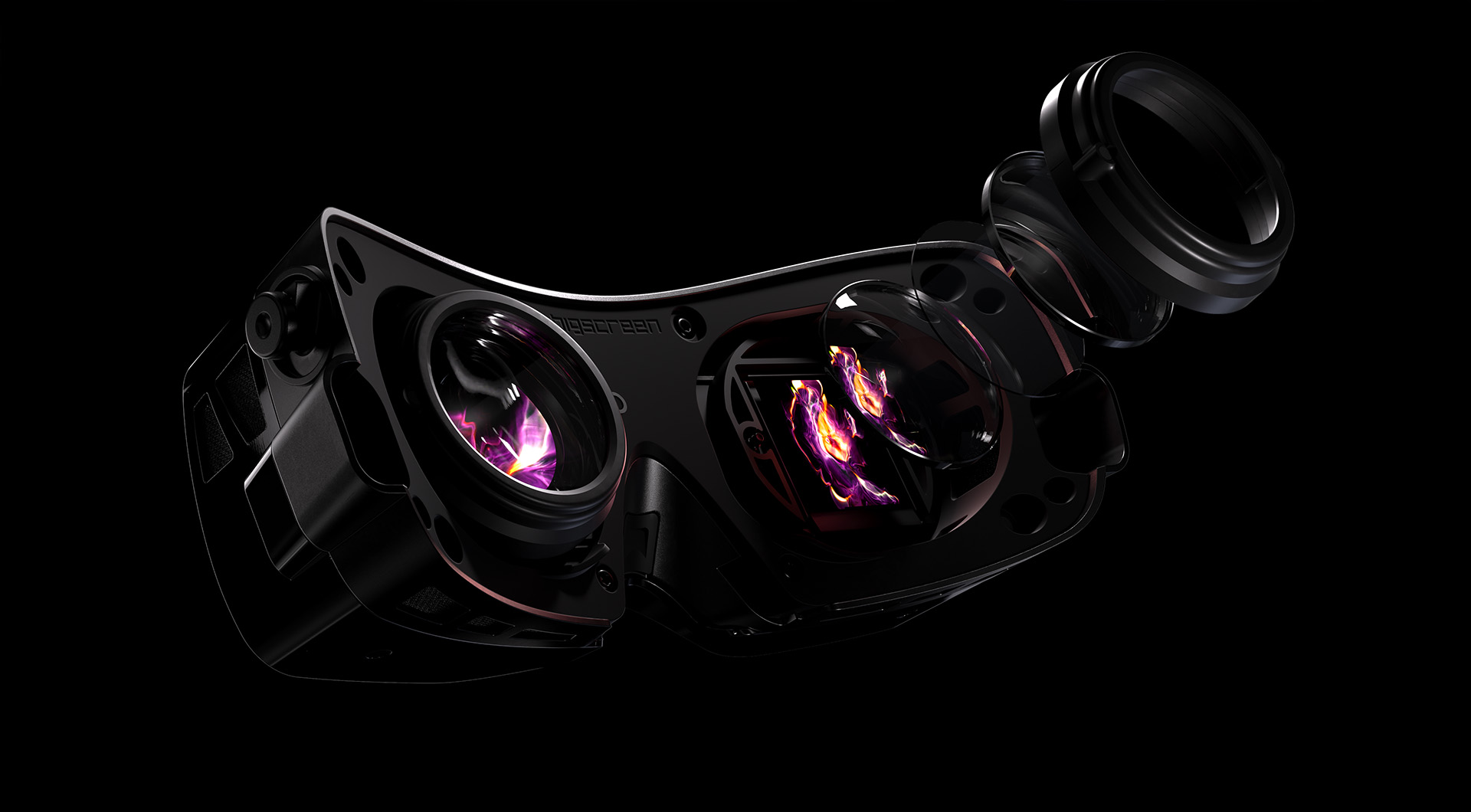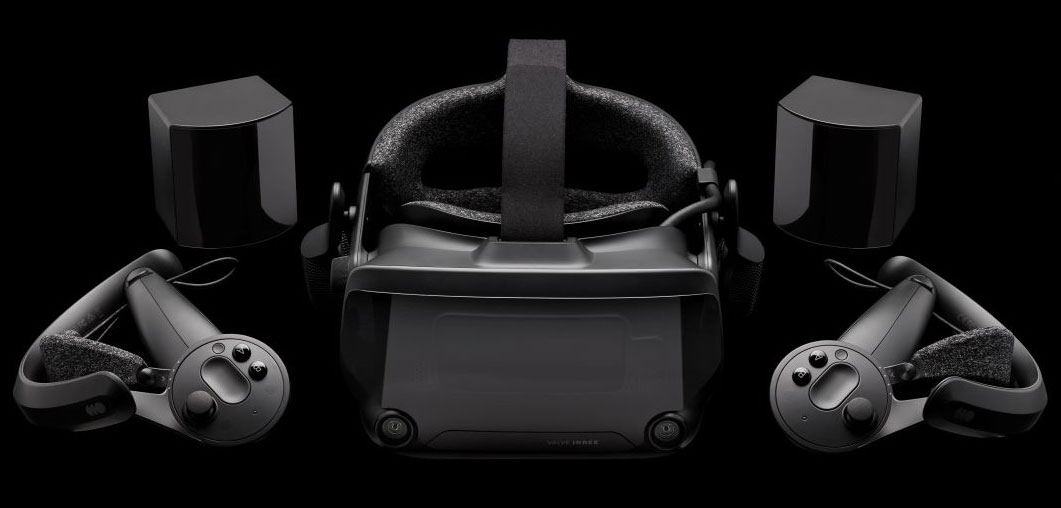This upcoming VR headset aims to solve virtual reality's most frustrating problem
An uncomfortable headset takes you right out of an experience, but the Bigscreen Beyond promises ultra-lightweight, compact optics.
The Bigscreen Beyond is an upcoming VR headset that claims to be the world's smallest. I don't doubt the claim, either—this thing is smaller than your average pair of ski goggles, and that could help make VR a lot more comfortable. I'm not kidding about its lightweight nature, this thing is said to weigh just 127 grams. That's nearly four times lighter than the Meta Quest 2.
It's also only 49.2mm deep, which is much thinner than most headsets on the market today. That means the headset protrudes out from your face a lot less, which could make it a whole lot more comfortable and less fatiguing to wear. That's the aim, anyways.
It's achieved through a few key components. Firstly, MicroOLED displays. These compact panels deliver a total resolution of 5,120 x 2,560, or 2,560 x 2,560 per eye, at up to 90Hz refresh rate. That's impressive considering the Valve Index's resolution is 2,880 x 1,600, or 1,440 x 1,600 per eye. The Beyond's lenses fit into a much more compact space than most. They're only 1-inch big, which means each pixel is crammed very close together to cut out the screen door effect that plagued first-gen VR headsets.
Also required for this sort of form factor are pancake lenses, which not only sound delicious but also drastically reduce the space required between the lens and the screen to actually create a 3D effect. These lenses have been a pretty popular concept for next-gen VR for a while, with Meta using pancake lenses in the Quest Pro and Nvidia using pancake lenses for its uber-thin holographic glasses.
But there is a kicker. To keep it small and compact, the Bigscreen Beyond has to be made to measure. Once you pre-order the device, you send Bigscreen a 3D face scan, which is used to build the headset to your face shape and interpupillary distance (IPD). That means, unlike many other headsets on the market, you can't change the IPD on the fly to adjust for use by multiple people.
It's a bit of a selfish buy, and means there's a pretty big trade off to get such a compact form factor as this. However, there is a big benefit to this, too. If you're someone that uses glasses or contact lenses, you can also order customised prescription lenses that slot into the Beyond headset to make it a perfect fit for your eyes.

Alright, I'm pretty on board with this concept. I absolutely loathe having to wear glasses in VR. No matter how spongey the face plate is, it's never spongey enough to be comfortable over long periods with even the thinnest frames. Some little prescription inserts sound like a dream, to be honest.
Keep up to date with the most important stories and the best deals, as picked by the PC Gamer team.
The important bit for us PC gamers is that the Beyond is fully compatible with SteamVR. It's a PC VR headset—there's no onboard processing here for a standalone headset like the Quest 2. That also means you will need to buy SteamVR Base Stations and Valve Index Controllers to get a proper PC gaming experience with the device.
The Bigscreen Beyond is expected to ship in Q3 2023, though for all the personalisation and face-scanning the company admits there will be a delay in receiving the headset after ordering.


Best VR headset: which kit should you choose?
Best graphics card: you need serious GPU power for VR
Best gaming laptop: don't get tied to your desktop in VR
It's been priced at $999 on pre-order. Or £1,149 for us Brits, in what has to be the worst exchange rate deal since Nvidia's RTX 4090. It's also €1,369, which is even steeper again. Damn these European prices.
YouTube channel Tested have had their hands, or face, in a near-production level Bigscreen headset and came away pretty impressed with just how compact this device is. Most of all, it sounds like the customised face cushion is the real winner here, and that does sound like a smart way to keep the headset's pressure distributed over a wider area to avoid fatigue over long gaming sessions. The MicroOLED displays also sound like they work a treat with a clear picture.
I'm definitely keen to see how this project turns out. I also wouldn't be surprised if more of these sorts of features are what we can expect from future PCVR headsets from the already big players in virtual reality, like Meta and Valve.
If you haven't heard of Bigscreen before, they're known for their VR cinema and movie-watching software. So they're already players in the VR game, but interestingly not a hardware company at heart. I'm not sure that necessarily matters much, it's not like Steam or Meta started out with hardware either, but it's definitely worth bearing in mind this will be a first-generation device.

Jacob earned his first byline writing for his own tech blog. From there, he graduated to professionally breaking things as hardware writer at PCGamesN, and would go on to run the team as hardware editor. He joined PC Gamer's top staff as senior hardware editor before becoming managing editor of the hardware team, and you'll now find him reporting on the latest developments in the technology and gaming industries and testing the newest PC components.


